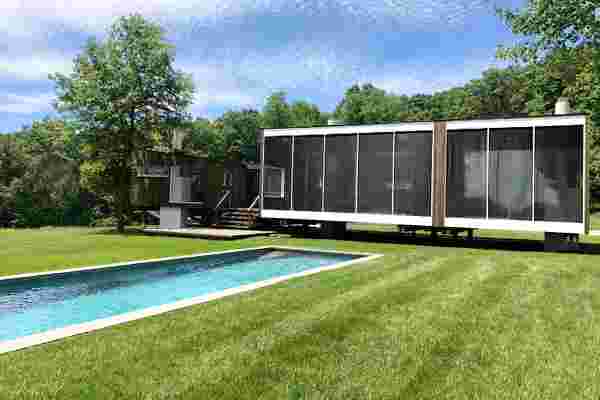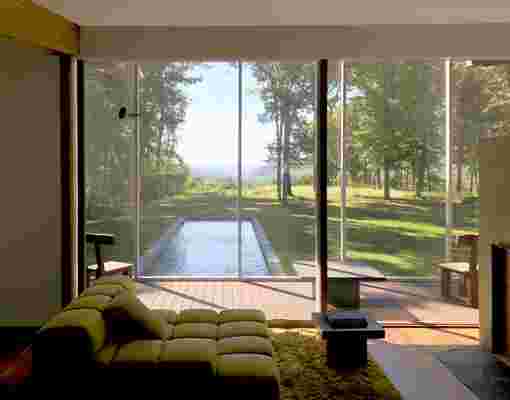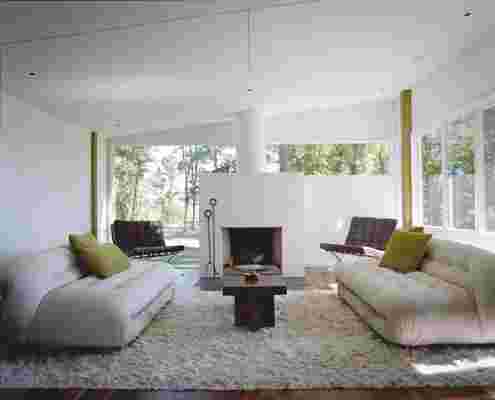Calling all Marcel Breuer fans: While you will never get the chance to commission a project from the late architect, at least you still have a shot at living in one of his designs. This December, Wright Auctions will put up for sale the Rufus Stillman Cottage, designed by the Hungarian architect and built in 1973–1974 by his longtime friend and client, Rufus Stillman, for whom the cottage is named. The property, located in Litchfield, Connecticut, is a two-bedroom, one-bath home set up on stilts with an expansive view of the Naugatuck Valley, and is estimated to fetch between $2 and $2.5 million. It is divided into two sections: The main structure hosts a combined kitchen and dining space, as well as a cantilevered screened-in porch, while the second structure—built posthumously by Marcel Breuer Architects—is a pavilion addition with a foyer, great room, master bedroom and bath, and two abutting screen porches that run the length of the home. A detached carport and garage completes the cottage, which is located not far from two other homes Breuer built for Stillman (appropriately named Stillman 2 and Stillman 3), which at one point all belonged to the Stillman family.

A screened-in porch overlooks a lap pool.

Floor-to-ceiling windows allow light to flood into the porch.
The cottage's design is an important contribution to modern architecture, and serves as a study in economy and landscape. Its design is perfectly identical to the architect's first Wellfleet cottage design, the Breuer Cottage, which he built in 1944. Breuer designed a whole host of cottages in Wellfleet, Massachusetts, but the Stillman cottage is the only one located in Connecticut. It was commissioned at the behest of Rufus Stillman, who worked with Breuer on over 20 projects over the course of three decades and remained one of his closest friends. In his book, Sun and Shadow, Breuer explains that he placed the cottages on stilts to mimic the effect of a camera on a tripod—by elevating the structure, the views improve and give the homes a "floating effect." By combining two approaches, floating and on-ground, he was able to create a "hillside house," which served as the basis for his preferred method when designing residential projects.

While the cottage has been updated to suit contemporary life, it still retains a 1970's feel.
A view of the bedroom, which looks out onto the pool.
As with his other Wellfleet cottage designs, Breuer intended for the Stillman cottage to only be used seasonally and wanted it to serve as an escape from modern conveniences, explains Richard Wright, president of Wright. As a result, the cottage was built using strung gas lanterns in place of electricity, open studs, and used a hand-dug well as a water supply. In the years since, the cottage has been updated with modern appliances to suit contemporary living standards, though the original charm of the Breuer's structure still remains.
